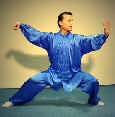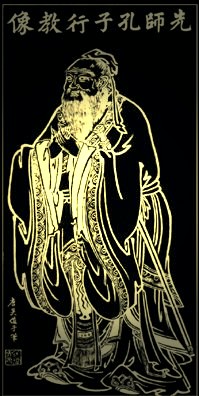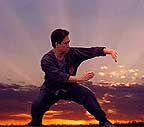A
note By the Author :
Taoist
principles and thinking looks quite simple and non-violent ! But
its the only philosophy that extends to most effective martial
arts. Like Shaolin systems, Tai Chi, Dim Mak and many others incorporate
Taoist "ways". A Taoist monk/martial artist
will behave and look like a soft soul, ie when you hit he
deflects and when you grab he flows like water ! and when you
strike harder then he just contracts and expands again !..
You
may know many martial artists/experts who can break many bricks
with their hands or smash tiles into pieces.. But if they hit a
pillow (or a soft object) with their hands then nothing happens
! Because these don't show resistance to the hit, hence the hit
becomes ineffective ! In a similar fashion a Taoist martial
artist will not show resistance to your hits, infact he
will take/deflect your blows and move into you (close to
your body) easily from where he could directly hit your vital
organs. Being mentally/spiritually stronger their hits carry
more focus and power!.
The
'way' of Tao is "spiritually unconquerable and physically
formless/infinite". viz, Spiritual refinement leads to
a superior being who follows the "way of the nature and
universe".
Author
: Jimmy George (Email: WebMaster@CoolShack.com). |
Taoists saw martial arts as something far more important than a simple means of defense (or a possible ticket to big bucks in the World Wrestling Federation). They saw them as a gateway ot the spiritual world.
Note : We refer "Taoist martial arts" as
the styles/martial arts that follow the Taoist principles..
There is no "Taoist martial art" as such.
Taoists had been training in martial arts for hundreds of years before the West even knew such a thing existed, and are responsible for maintaining many different styles which would otherwise be lost to us in this modern age. They saw martial arts not only as a way to protect their homes and monasteries (although this came in very handy...someone or another was always trying to sneak into Taoist temples, either to rob, to kill, or just find out secrets. People stupid enough to try this quite often did not make it out in one piece, if at all). They saw them as means of regulating breathing, physical exercise, a bridge to philisophical inquiry, and a preparation for meditation.
Taoist martial arts are often very different from other styles of martial arts, like Kung Fu and Tae Kwan Do, because they reflect not only simple defense and attack but complex philisophical concepts as well.
Taoist styles are "Soft" Martial Arts. These styles don't use so much brute force as speed, agility, and "give-and-go" movements.
To explain the theory behind these styles (which may seem horribly inferior, at first), let's examine this old Taoist image: A Strong Man swatting at a sapling tree.
The strong man hits and punches and kicks with all his might, but the tree just bends back and forth. If he ever does manage to connect, the tree just bends, then whips back and smacks his palm. The harder he punches, the more it bends, and the harder it strikes his palm. Eventually, the strong man (if he has the brains of a cabbage) just gives up and walks away.
Soft martial arts teach you to be like the tree; to give and redirect, not oppose with brute force. These styles could be devestating, and many of the world's greatest martial champions would never be able to lay even a finger on a Taoist master.
Taoist martial arts are often centered around giving and redirecting, without direct retaliation; however, when they do utilize attacks, the aim is often to wound without killing. Taoists did not believe in unecessary violence, and if a student could not win a duel without killing an opponent, that was considered a weakness.
Perhaps one of the best examples of this is our friend Kenshin's Sakaba Sword. A Sakaba sword is a sword with the blade on the the wrong side, so the dull (and non-lethal) side is facing out. Kenshin uses this so that he can sword fight without killing his opponents.
Quite a few characters in Rurouni Kenshin have taken time to mock Kenshin's sword. Quite a few of those same people later got their butts kicked all over the floor by the Sakaba sword. The point is that martial arts don't have to be lethal to be strong, as Kenshin demonstrates. The Taoists knew this, and they harnessed this strength to create some of the most dangerous (and beautiful) martial arts known to man.
Perhaps the most popular Taoist martial art is Tai Chi
Chuan. Tai Chi is notable because it is performed incredibly slowly, almost like a dance. The movements are calculated and graceful, but hidden in each step lies a potent defensive posture. Used as a tool to calm the mind and slow the breathing, Tai Chi has numerous health benefits for both the long time practitioner and the newcomer (in fact, if you observe the opening song from the Ranma 1/2 television series, Ranma, Genma, and Akane are performing moves from Tai Chi Chuan. To the right is a gif animation of Genma doing just that). For reference purposes, I will be mostly referring to the Yang Family style of tai Chi Chuan, which is the most common form and the form officially sanctioned by the government of China. But Tai Chi is more than simply good exercise. In every move, it embodies the teachings of Taoist Philosophy. For example:
In each stance, one leg is empty, or has no weight, and one leg is full, or most of the weight. This is demonstrating Yin and Yang.
In the movement "Grasp The Swallows Tail", you do not block the arm, you pull it. This is giving in and redirecting.
Each movement is slow, never hurrying. This is the Taoist belief in observing the world's pace and never hurrying. In different forms of Tai Chi, the slow movements are interspersed with fast movements; this is Yin and Yang.
The list goes on. The practice of martial arts has numerous physical benefits, but the Taoists added spiritual benefits by incorporating their philosophy as well. By practicing these arts, you can gain a firmer grasp on concepts that may seem foreign to you, as well as get in shape and defend yourself.
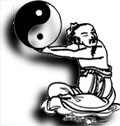
- Guidelines
:
In all your activities, have a single purpose.
Solve all problems by accepting the bad energy and sending out the good.
Renew your commitment when you get up and before you go to sleep.
Accept good and bad fortune with an equal mind.
Keep your vows even at the risk of your life.
Recognize your neurotic tendencies, overcome them, then transcend them.
Find a teacher, tame the roving mind, choose a lifestyle that allows you to practice.
Love your teacher, enjoy your practice, keep your vows.
Focus your body, mind, and spirit on the path.
Exclude nothing from your acceptance practice: train with a whole heart.
Always meditate on whatever you resent.
Don't depend on how the rest of the world is.
In this life, concentrate on achieving what is most meaningful.
Don't let your emotions distract you, but bring them to your practice.
Don't let your practice become irregular.
Train wholeheartedly.
Free yourself by first watching, then analysing.
Don't feel sorry for yourself.
Don't be jealous
Stay focused.
Don't expect any applause. |
Taoist and Buddhist
concepts :
Taoism
There are primarily 2 sects of Taoism: the philosophical and religious sects, similar to the broad divisions seen in Buddhism. They both studied nature, but for different reasons. The philosophical Taoists, who saw the teachings of Tao as a guide for life that is essentially deity-independent, studied nature to look for harmony. The religious Taoists, who believed strongly in a pantheon of greater and lesser gods, studied it to look for ways to change the course of nature (alchemy). This latter seems particularly difficult to understand because altering nature is moving against the flow.
The philosophical school of Taoism has its roots in the fifth century writings ascribed to Lao Tzu, a beaureaucrat who spurned the world to find bliss. According to legend, he was recognized as he left the kingdom, where the border guard requested Lao Tzu write down the essence of his wisdom. The resulting book is known as the Tao Te Ching, or Book of the Way. In essence, the knowable universe is composed of opposite components, whether physical (hard/soft; dark/light), moral (good/bad), or biological (male/female), which may be classed as either YANG (pronounced "yong") or YIN. When combined, existence is produced, and is manifest as TAO. Neither yin nor yang can exist independently (ergo the fallacy of "yin" or "yang" styles). The symbol of Tao is the "fish symbol" within which are two small dots (yin in the yang section, yang in the yin section), and around which are a pair of arrows, symbolizing dynamic interaction. The arrows have often been removed in contemporary motifs, but were popularized again when used by Bruce Lee in his Jeet Kune Do emblem.
The philosophical Taoists are largely atheistic, looking to nature for the secrets to harmony and bliss. As a result, Taoist martial artists mimicked animals in their quest for martial arts techniques, and many styles, including mantis, snake, and some tiger, show distinct patterns of nature mimicry. However, the theistic sects of Taoists believed that by understanding the harmony of nature, you could alter nature. In addition to alchemy, theistic Taoists developed complicated schools of ceremonial magic, and developed the martial arts style of Pakua.
The Taoists had their own temples and had their own system of martial arts (Hsing-I, Pakua). Emphasis was on internal styles. T'ai Chi Ch'uan (="supreme, ultimate fist;" a rather interesting, if redundant, use of superlatives), often attributed to Taoism, had a slightly different origin. It was designed to be a martial art for soldiers. 1200 years old.
While both Taoists and Buddhists understood and studied the concepts of duality in nature, the Taoist was more focused on the differences of Yin and Yang, while the Buddhist was more interested in the state of dynamic harmony of the two (ironically, Buddhists focused on Tao rather than its parts). Taoist philosophy is concerned with the intrinsic nature of Yin-ness and Yang-ness, readily seen when studying Taoist medicine or magic, for example. It is a Taoist stance to look at "Yin" versus "Yang" techniques, "Hard" versus "Soft" styles. (See also Buddhism.)
By "many roads," Tamo points out that enlightenment is reached by different souls in different ways; these may include the various seated and moving meditations. Such practices are termed yogas, gung fu, and sudden self-realization. However, all of the possible routes share the common themes of recognition of self-awareness, and practice of the Dharma--the Eightfold Path
Jing and chi are interchangeable. In our body, for example, jing is constantly changing into chi and vice versa. Modern physicists would be surprised at how many centuries earlier Chinese masters already knew about the relativity of matter and energy. The transformation of the food you have eaten into force or strength for your work is an example of jing changing into chi. The transforation of cosmic energy taken in through breathing into healthy cells to repair wear and tear inside your body is an example of chi changing into jing.
There is another Chinese word often used in martial arts that is also transcribed as "jing", and it is probably this word that you mean. Here, jing means internal force, and is differentiated from chi in that jing is "harder" whereas chi as flowing energy is soft. Jing needs chi to manifest it. In other words, in order to have internal force, one must have a good supply of vital energy.
The term "fa jing" is often used in kungfu, and it means "manifesting or sending out internal force". In Shaolin Kungfu, there is a saying as follows: internal force is manifested from the palm, vital energy is emitted from the abdominal energy field. This means that during combat, when a master wants to strike an opponent using internal force, he does not have to drive his fist ifrom a distance into the opponent; he merely places his palm on the opponent, and with an exertion of his abdominal energy field, he can transmit internal force from his palm into the opponent to hurt the latter seriously.
Taijiquan masters differentiate between da-jing and fang-jing, or hit-force and release-force. When a master uses release-force on an opponent, the opponent is thrown many feet away but is usually not hurt badly. If the master uses hit-force, the opponent may remain on the same spot but is seriously injured.
Introductions to Taoism/Daoism
:

A way of thought or life. The word comes from the Chinese tao, meaning 'way'. There have been several such ways in China's long history, including Confucianism and Buddhism. In about the 6th century BC, under the influence of ideas credited to a man named
Lao-tzu, Taoism became "the way". Like Confucianism, it has influenced every aspect of Chinese culture.
Taoism began as a complex system of philosophical thought that could be indulged in by only a few individuals. In later centuries it emerged, perhaps under the influence of Buddhism, as a communal religion. It later evolved as a popular folk religion. See martial arts.
The way of the Tao is the essence of their teachings. True teachers and students of martial arts are healthy in mind, body, and spirit. The way of the Tao is their way of life.
When learning about martial arts students learn through Taoism to be strong in mind. Good concentration, not body strength, is the key to success. Mastery is achieved when no fighting at all has taken place. The Tao teaches to only use martial arts as a form of self defense. Some martial arts students only learn to dodge strikes, not how to give them. A healthy mind and body are necessities because without them power is nothing. Bruce Lee remains a leading figure in martial arts even though he is no longer living. He points out in is his book, Tao of Jeet Kune Do, “Know the emptiness and tranquility of your mind. Be empty, have no style or form for your opponent to work on.”
Quote :
"The soft overcomes the hard.
The slow overcomes the fast.
Let your workings remain a mystery.
Just show people the results. "
: Lao-tzu (Tao-te Ching) from "The Classics"
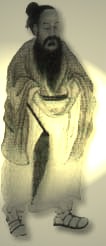
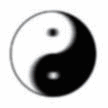
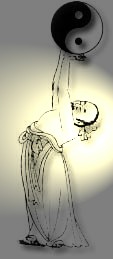
Quote :
"If you want to shrink something,
you must first allow it to expand.
If you want to get rid of something,
you must first allow it to flourish.
If you want to take something,
you must first allow it to be given.
This is called the subtle perception
of the way things are."
: Lao-tzu (Tao-te Ching) from "The Classics"
Tao Philosophy

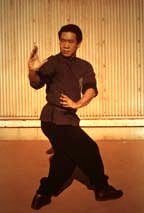
The purpose of martial arts is to live a long, healthy and enjoyable life, free from illness.
Fighting skills are learned to allow you to defend yourself, to increase your self confidence
and power. Self awareness is also increased, allowing you to experience your
limitations and develop beyond them.Avoiding confrontation, minimizing stress and
developing strategies for successfully dealing with environment and society are all
necessary studies if you want to lead a happy life.
Theory Of Time and Change
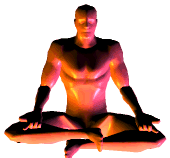
This theory holds that the universe is in a state of perpetual change - nothing remains the same,
or ever repeats itself exactly. Within this constant change, there are patterns and cycles which we
can learn to observe and anticipate.This makes it easier for us to harmonize with our environment
and plan our actions.
On a martial level we can use this theory to help plan our fighting strategy -for example, if your
opponent is clearly stronger (yang), you can use evasive manoeuvers (yin) to decrease (avoid)
his force. If you can create an opportunity where he is unbalanced or in a weak position (yin),
you have created a strong position (yang) to attack from. Following the changing patterns and
conditions, you adjust yourself accordingly.
Quote:
"Complete" :
Nature is complete because it does not serve itself.
The sage places himself after and finds himself before,
Ignores his desire and finds himself content.
He is complete because he does not serve himself.
: Lao-tzu (Tao-te Ching)
Influence of
Taoism in Marital Arts and human mind:
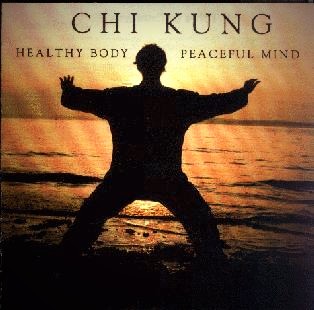
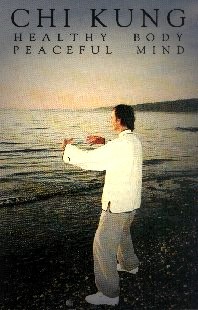
What is Ki?
"KI" is developed by meditation, concentration, and the fundamental exercise of abdominal breathing. This doctrine was the main source of metaphysical and intellectual speculation for Indian, Chinese, Tibetan, and Japanese philosophers and religious leaders. It was ultimately adopted by almost all the important schools of Martial Arts. It is not considered mysterious or magical but rather a common property of every human being. The difficult part is learning how to master it and release it profitably. It can produce effects not only within the body but also at a distance from the practitioner. It is claimed that this KI energy can be used to turn the hand into a powerful weapon, to heal wounds and diseases, or break bricks and boards without even touching them. It can be used as a shield to keep the individual from being injured. A Martial Artist can so direct the KI power that no matter how many blows he might receive, whether from fists, staves, or even swords, he will not even show a bruise or scratch on his body.
One who has mastered the art is able to strike a pile of bricks, for instance, with just a slap, and break only one pre-selected brick in the pile. This energy, it is claimed, can be used to concentrate all available KI into a loud shout which, if so desired, can actually kill an opponent. On the defensive side, a man knowledgeable in the techniques of KI, can, through concentration and meditation, be completely indifferent to physical discomfort, pain, and even death.
General Information
Lao - tzu, or Master Lao, is the name of the supposed author of the Taoist classic Tao - te Ching. According to Taoist legend, Lao - tzu, the founder of Taoism, was named Li Erh and had the courtesy name Lao Tan. An older contemporary of Confucius (551 - 479 BC), he was keeper of the archives at the imperial court. In his 80th year he set out for the western border of China, toward what is now Tibet, saddened and disillusioned that men were unwilling to follow his path to natural goodness. At the border (Hank Pass), however, the guard Yin Hsi requested that Lao - tzu record his teachings before he left, whereupon he composed in 5,000 characters the famous Tao - te Ching (The Way and Its Power).
The essential teaching of Lao - tzu is the Tao, or Way, to ultimate reality - the way of the universe exemplified in nature. The harmony of opposites (T'ai Ch'ai) is achieved through a blend of the yin (feminine force) and the yang (masculine force); this harmony can be cultivated through creative quietude (wu wei), an effortless action whose power (te) maintains equanimity and balance.
Taoism taught its believers to cast aside worldly pleasures, honors, and glory and to be content with their lot. Later on, Taoism came to be a religion of spirits and ancestor worship far removed from the original simple teachings. A priesthood arose, shrines and temples were erected, and an elaborate system composed of magic, charms, and spells was developed.
In principle, Taoism suggests not striving for 'the best', which theoretically is never attainable. Just accept 'good enough' and be contented and happy. Taoism teaches simplicity, frugality and love of the soil.
Iron Shirt training is an effective body strengthening method to improve the quality of the physical body for martial arts, as well as, for any other physical pursuits. Cavity Press (dianxue) is used in martial arts fighting applications, as well as, in healing. When applied properly in fighting, your opponent will lose their fighting ability. With focused power and speed, a strike and/or grab with the fingers, palm, fist, elbow, knee, or toes, to the proper points on the body, can restrict and cause qi and blood to scatter in the opponent’s energy pathways. This would cause a restriction and/or loss of qi and blood to the area struck and will result in numbness, temporary paralysis, dizziness, unconsciousness, etc. Iron Shirt and Cavity Press are both very important components of martial arts training. The ability to apply Cavity Press to a stronger attacker may save your life. Having knowledge of the vital areas and strengthening the vital areas in your body can prevent an opponent from effectively applying a Cavity Press on you!
Light or aura are expressions of higher vibration qi . Qi is the foundation of life, and light is the foundation of spirit. Qi is still within the three dimensional space where the physical body lives, and has not gone beyond the restriction of matter. Light on the other hand has the characteristics of the higher
dimensions (like done in Golden Light Method and Taiji Yin-Yang Gong
form).
Taoist believe that "Without light, your attainment will not reach a high potential. Without light, the cultivation of immortality has no immortal potential". The nurturing of the Original Spirit and the expression of the extraordinary abilities are accomplished in light form.
It is necessary to gather Spiritual Light (light-qi) if one is to nourish the Original Spirit. To be connected to the higher planes, it is also necessary to open the Heavenly Eye (Third Eye).
Tao influcence & Martial Arts :
Wushu - the art of fighting - is the general term of all self-defence sports, some of which may be carried out with the fists or the legs, or with the help of swords or lances. The mastery of the various techniques once entailed very esoteric knowledge, which would only be passed on within a family or monastery, or from master to pupil.
For an outsider, the variety of Wushu styles is rather confusing. One Wushu technique is " long boxing" which depends very much on dexterity and speed, and is particularly popular with children and youngster. Another technique is imitation boxing, Xingyiquan, which favours forceful and balanced movements, and is characterized by small jump sans strong arm movements, often accompanied by loud screaming.
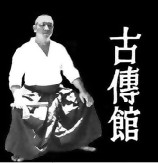
Taijiquan, or shadow boxing, is a gentle method that aims to dispel the opponent without the use of force, and with minimal effort. It is based on the Taoist idea that the principle of softness will ultimately overcome hardness. According to legend, it is also-just like Shaolin Boxing-derived from the movements of animals, geared to breaking the momentum of the opponent's attack and letting it disappear into thin air, it was originally a method of self-defence, but in China, it is mostly older people who use it for meditating and strengthening the body.
Shadow boxing depends on the application and mastery of the life energy qi, which can be directed to all parts of the body with the help of mental training. Qi must flow and circulate freely in the body.
The round movements of taijiquan are derived from this-they can be firm or loose, hard or soft, be directed forwards or backwards, but the movement must always be smooth and flowing. Through consistent practice of taijiquan, one eventually comes very close to the ideal of Taoism.
In a wider sense, qigong (breathing technique) is also part of Wushu and dates back 3,000 years. In qigong, techniques for regulating the breathing can bring about concentrated thinking and a state of inner calm.
Tai Chi Chuan, Moving Meditation :
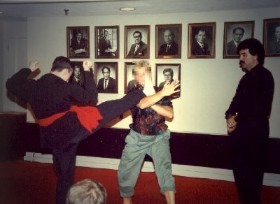
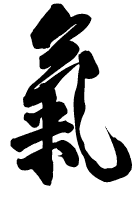
Literally translated as “Grand Ultimate Fist”, Taiji Chuan (also spelled Tai Chi Chuan), is considered one of the soft or internal arts. Combining meditation, Chi Kung (breathing exercises) and fighting techniques. Taiji is the ultimate in self defense.
Taiji’s roots are deeply woven in Taoist (pronounced doaist) thought. In early times, Taoism was a kind of Chinese religion based on a natural way of living. They followed cycles of the earth, sun and moon. Imitating actions of plants and animals, the Chinese tried to stay as close to nature as possible. Taoist religion is based on the idea’s from a book called the I Ching (pronounced yee jing). The I Ching tries to explain every possible situation in life through natural phases. Many Taoists became hermits to shed themselves of civilization so they could seek out the “natural way”. Seeking seclusion, the hermits created a temple in the Wu Tang mountain range of China. Around 200 B.C., one famous Taoist Lao Tsu wrote out his interpretation of the I Ching. Eventually his views became the philosophy known as “Taoism”, and it is still a guide for many philosophers and Taiji practitioners alike.
There are many different stories on the origins of Taiji, but it’s ultimate beginning dates back to the legendary Da Mo and the Shaolin temple. In the early 500’s, the monks at Shaolin kept a simple life of meditation and Taoist thought. From India the Buddhist Prince, Da Mo (also known as Bodhidharma) traveled to China, spreading Mahayana Buddhism. When he came upon the Shaolin temple in Honan, he found the monks weak and without physical ability. Even though they were on a spiritual journey, Da Mo stated “the body, mind and spirit are inseparable and if you neglect one, the others will surely suffer as well”. Da Mo then spent the next 9 years developing exercises to help the monks physically and mentally. These were called the “Muscle change classics”, “Bone Marrow Washing Course” and “the 18 Lohan Shou”. Eventually these exercises developed into a self defense system. He also combined the Chinese Taoism with Indian Buddhism and created what is now called Zen Buddhism.
In the late 1400’s Shaolin master Chang San Feng left the temple. He felt the self defense techniques that had evolved were too hard, using to much brute force. Heading for the Wu Tang mountains Chang sought to soften the Shaolin techniques. One day while practicing, Chang noticed a fight between a crane and a snake. As he watched, the snake used very soft coiling motions to ward off the birds attacks. He also noticed the crane used it’s wing to fend off strikes by the snake. This fight had much impact on Chang’s innovations on his Shaolin style. Combining Taoist breathing exercises along with soft fluid coiling self defense moves, Chang had created a soft or internal kung fu system. Chang San Feng called this system he developed “Mein Chuan”, Cotton fist or Soft fist. Although this cannot actually be called Taiji, this was the beginning of how it evolved. The teachings of Chang San Feng were passed on through generations of Taoist masters from Wu Tang mountain including: Wang Tsung, Chen Tun Chow, Chang Sung Hsi, Yeh Chi Ma, Wang Tsung Yeuh, Zhang Song Xi and to Chiang Fa.
In the 1700’s, Taoist monk Chiang Fa taught the Wu Tang mountain soft style to Chen Wang Ting, who was already a martial arts master. Chen took the Wu Tang soft style and blended it with his kung fu skills, creating what is considered the original form of Taiji. Chen taught his Taiji only to his family members and so did the rest of the Chen clan. Chen style Taiji can be distinguished by fast and slow movements, as well as hard and soft movements (a real yin and yang combination).
Chen’s Taiji uses “Chan Tsu Chin”, a spiraling action for attacking or yielding. Then in the early 1800’s a great martial artist named Yang Lu Chan heard of this “Grand Ultimate Fist” and set his self on learning it. However, Chens Taiji was a family system and only people with sir name of Chen would be permitted to learn it. Yang was a persistent. He gained entry into the family by posing as a servant. Every chance he could, Yang spied on the Chen’s practice, went back to his room and copied their movements for hours. One day Chen Chang Xing found Yang practicing, and seeing his diligence and superior skill level, decided to teach him formerly.
After learning all he could from Chen, Yang went back to his hometown. He taught Taiji to his friends and relatives. He also went to Beijing (capitol city of China) and taught Taiji to the royal family. Yang’s Taiji became his own unique style. Yang’s Taiji can be recognized by soft or yielding actions and the use of fa jing (explosive power). Many people challenged Yang to fights, but he was never beaten. Yang, Lu Chan’s Taiji skill was unsurpassed. He became known as “the man with no rival” and also “the unbeatable Yang”.
Yang Lu Chan taught the system to his son Yang Chian and grandson Yang Cheng Fu. Yang Cheng Fu realized the potential to spread his grandfathers Taiji to all of China. So in the early 1900’s Yang Cheng Fu and his student Cheng Man Ching softened his grandfathers Taiji even more. They also made the form a lot shorter so it would be easier to teach to a broader spectrum of people.
Cheng Man Ching was a master in his own right. He became known as the master of the 5 excellences. The 5 excellences being Taiji, Chinese medicine, painting, poetry and calligraphy. One of Cheng’s top students was William C.C. Chen. William Chen went on to be one of the best full contact fighters in Taiwan during the 1950’s. In 1965 he moved to New York city and continues to teach there. Grand master Chen has made innovations to Yang Cheng Fu’s short form, even furthering Taiji Chuan’s effectiveness.
Meditation :
"Meditation is not about feeling a certain way. It's about feeling the way you feel. It's not about making the mind empty or still, although stillness does deepen in meditation and can be cultivated systemically. Above all, meditation is about letting the mind be as it is and knowing something about how it is in this moment.
Quote :
"Knowing"
:
Without taking a step outdoors
You know the whole world;
Without taking a peep out the window
You know the colour of the sky.
The more you experience,
The less you know.
The sage wanders without knowing,
Sees without looking,
Accomplishes without acting.
: Lao-tzu (Tao-te Ching)
Often, people think of meditation as some kind of special activity, but that is not exactly correct. Meditation is simplicity itself. As a joke, we sometimes say: "Don't just do something, sit there." But meditation is not just about sitting, either. It is about stopping and being present, that is all. Mostly we run around doing. Are you able to come to a stop in your life, even for a moment? Could it be this moment? What would happen if you did?
Meditation really is about human development. It is a natural extension of cutting teeth, growing an adult-sized body, working and making things happen in the world. At some time or another, you are practically forced to sit down and contemplate your life and question who you are and where the meaning lies in the journeying of life ... your life."
Quote:
Those who flow in the peace and harmony of Infinity
make no distinctions.
They are therefore indifferent to friend and foe,
to good and bad, to honor and infamy.
This is the natural state of human beings.
: Lao-tzu (Tao-te Ching)
Defining the Tao
:
The tao [way] is said to be that principle responsible for the creation and support of the universe. Since it exists before the universe, it can be thought of (if only perhaps in a figurative sense) as the generating force. Early traditions in Chinese thought usually had the role of creator belonging to t'ien [heaven] with the tao then defined as the way that heaven followed (or as the way that man ought to follow). But with the work of Lao Tzu the tao becomes a completely independant entity. There is a blurring of the line between the tao as a thing and the tao as an abstract principle, and the two are said to be necessarily confused because they share the common characteristic of trancending the senses. While the tao is often described in terms of tangible qualities as if it were a concrete thing, Lao Tzu affirms that no terms can properly be applied to it since all such descriptors, in being specific, necessarily limit its description. If it is to be said to be like certain particular things then it cannot, by implication, be like certain other things. In trying to better capture a description of its nature, the whole idea of opposite terms becomes important. There is, throughout the work, an inference of there being something fundamental in that canon of opposites which structure our language and our view of the world; there is the inference that it says something about the essential nature of the universe and that that something is illuminated by our attempts to describe the tao. Consistently in these attempts then, it is always the lower terms - the "weak", the "submissive" and the "bent" - that are thought of as being the more useful (or at least, as less misleading) in such descriptions. This is important for the development of the later ethical part of the doctrine. Lao Tzu concludes to characterise the tao as plural in manifestation but singular in essence, as totaly real but totaly
unknowable, as nonpersonal and amoral. He urges that men should model themselves upon the tao, as the path of least
resistance through life. In order for them to do that, they must appreciate how it functions.
The Movement of the Tao
The operation of the tao is often misinterpreted as a process of cyclical change, as an endless round of development and decline, but the lesson that Lao Tzu teaches is for us to "hold fast to the submissive". Such a precept would be useless if it were to be given in the face of inevitable decline; it would be impracticable if it meant trying to remain stationary in a world of inexorable and incessant change. Accordingly, decline is not always inevitable and stasis is not Lao Tzu's prescription.
Quote:
"The taoist has no opinions
He simply listens, and acts
He treats those who are good as worthy
He treats those who aren't good as worthy, too
And so he finds their goodness
He gives those who are honorable his trust
He gives those who are dishonorable his trust, too
And so he gains their trust".
:Tao te Ching of Lao Tzu
Meditation upon the nature of things
Meditation as intuition drawn from observation shows that while development is typicaly slow and gradual, decline is contrastingly quick and abrupt; that while development seems to require some external motive, decline comes about as an intrinsic inevitability. In man, it is said that desire and covetousness spur him on to be ever wanting greater gratification. It is necessary to counter these natural tendencies by trying to know contentment, to "know when to stop". (Or, indeed, as is occasionaly implied, to know when not to even start: if one never contends then this at least ensures that one never suffers defeat ). Again there is a common misinterpretation that "doing nothing" is meant to be singularly negative and pessimistic. But it is connected with that (counter-intuitive) privileging of lower terms. Lao Tzu speaks of the "nothing" between the spokes of a wheel and the "nothing" within the walls of a vessel, claiming it is that which adapts such things to their purposes. He says of the empty vessel that it has the purpose of containment by virtue of its emptiness but that, when full, it has lost the "nothing" and achieved its purpose.
Quote:
"The man of Tao remains unknown.
Perfect virtue produces nothing.
"No-Self" is "True-Self".
And the greatest man is Nobody."
The Lessons of the Tao
Lao Tzu would have man emulate the tao by according due respect to the no-thing in things. He says that man should aim to be "without action" and "without name". By being "without action" it is meant for him to be innocent of knowledge inasmuch as to free him from desire; happiness comes from striking the balance in favour of subsisting, not consuming. By being "without name" it is meant for him to be able to give without claiming possession and to benefit without exacting gratitude; happiness comes from striking the balance in favour of being self-effacing and not egotistical. Politics and ethics are regarded as two aspects of the same thing. Consequently the lessons that are taught by meditation upon the consequences of the movement of the tao are intended to be applied as much to social government as to personal conduct. With Lao Tzu, the taoist always sees the relation between macrocosm and microcosm, a relation that pervades the taoist metaphysic. The nature of all things is in their te [virtue], and it is by virtue of their te that such things are what they are. Te is spoken of as what they "get" from the tao. The flux between things and their opposites is balanced by the operation of the tao through interdependant principles in yin and yang, (the one seen as active and appetative, the other as passive and vegetative). Ultimately, the apparent fact of opposition is merely relative and the logical conclusion of taoism is to destroy those very distinctions, leaving behind only ch'i [energy]. It is in the appreciation of this, that the taoist derives his ethic from an aesthetic, and in application his living achieves a harmony with his being alive. "When carrying on your head your perplexed bodily soul can you embrace in your arms the One And not let go?"
Quote :
"Home":
Accept and you become whole,
Bend and you straighten,
Empty and you fill,
Decay and you renew,
Want and you acquire,
Fulfill and you become confused.
The sage accepts the world
As the world accepts the Way;
He does not display himself, so is clearly seen,
Does not justify himself, so is recognized,
Does not boast, so is credited,
Does not pride himself, so endures,
Does not contend, so none contend against him.
The ancients said, "Accept and you become whole",
Once whole, the world is as your home.
:Lao-tzu (Tao-te Ching)
TAOISM AND COMBAT -
If two fighters with Taoistic principles stand face to face, ready to
fight, the fight would actually never take place. Both would wait and
see what the other is going to do. This way, the fight would be decided
without it ever have been fought. This is - seen in a philosophical way
- wishful thinking.
But let's imagine that one of them would attack. Just how and when are
Taoistic principles used during a WingTsun fight?
Now imagine that you, a WingTsun fighter, and your opponent cross
paths. Right from the start, you have the better chances when you act
according to Taoistic principles, which means that you would probably
never "attack". (But don't forget that principle that advises
you to take action against the harmful while the trouble is still small.
Or, see the section "Acculturation of the body".)
And while your opponent would be busy getting his attack together, you
would be freed from any form of decision-making; you would
"only" react. You have released yourself from any form of
expectation.
You let everything that may come from your assaulter simply happen.
Since you have not planned anything, you can't fall victim of a wrong
guess. So you react without intention, but you are reacting!
Your assaulter will have quite a bit of trouble trying to predict your
counterattack.
The characteristics of water comes closest to the idea of Tao.
Your movements as a WT fighter constantly "flow" in a
forward direction. Due to your passivity, your opponent deforms your
arms and legs, in exactly the way your body was taught to by practicing
Chi-Sao.
This way, your body will be able to find the "empty spaces" in
your opponent's attack. Your counterattack is like a river flowing into
a sea. If a boulder blocks its path, it elegantly flows around it.
Despite all obstacles in its way, the water reaches its destination.
Your attacker is like a boulder. Should he be so strong that he cannot
be pushed aside, first you let your body deform, then let your body
divert itself, and after that continue going your way.
You take things as they come. Your reactions are based on what your
body feels. This is where your strength lies: your body reacts to
reflexes. You do not waste your energy - leave that up to your
opponent!
The harder, more forceful and stiffer his attacks are, the more welcome
he is to you. Your movements are economical, almost lazy. You take the
shortest way such as the straight punch or the straight kick. But your
reaction isn't just absorbing your opponent's strength in a soft manner;
you add your own strength to his, while still remaining able to yield.
You do not run against brick walls that are stronger than you will ever
be. Only stupid people run agianst walls and injure themselves.
The wise look for a hole in the wall - or - simply walk around
it.
If you should realize that, after touching the wall, the seemingly
strong wall is a cardboard dummy, then, without hesitation, knock it
over
The Fighting Principles :
- Go forward!
As soon as the attacker moves close enough to potentially strike us,
we immediately advance into him with our own attacks, putting him on
defense, while keeping our vital targets protected. The goal is to
strike and disable the attacker as quickly as possible or, failing
that, to establish arm and leg contact with him so that we may react
by fast tactile, rather than slow visual, sensitivity.
- Stick to the opponent!
Should the attacker succeed in blocking or otherwise impeding the
advance of our arms and/or leg, we do not withdraw our limbs, but
maintain forward pressure towards the attacker's vertical axis and
stick to him. We do not allow him space to renew his attack.
- Give way to greater strength!
Tao principle is "soft-style" martial art. Should the
opponent exert strong forces on our sticking limbs, we do not fight
against his strength, but give way to it in a controlled fashion that
allows us to harness his strength and use it against him. We use his
own force to remove ourselves from its path and simultaneously
counterattack.
- Follow through and fill the gaps!
As a consequence of our constant forward pressure coupled with soft
relaxation, our limbs automatically flow like water into the gaps in
our opponent's defense, subjecting him to constant, overwhelming
attacks.
Please
click here to goto Next Tao page-2

|
|
